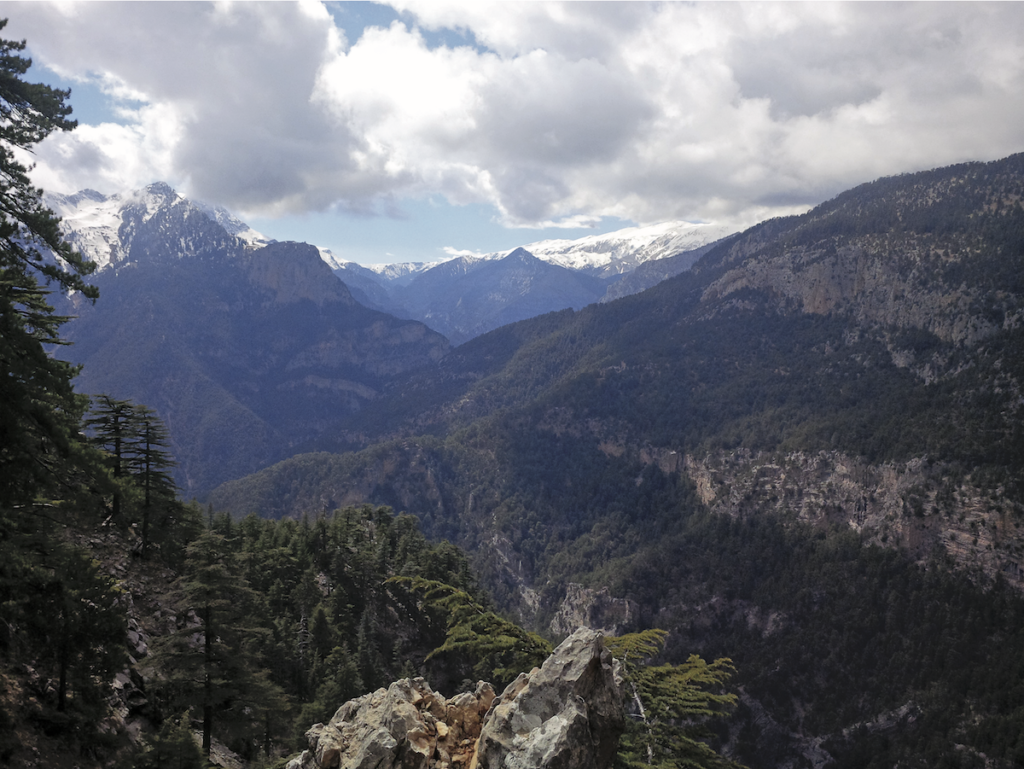Ibex are a type of a goat or Capra (scientific name) and are native to parts of Europe, central Asia and southern Russia. The average ibex hunt is similar in price to that of a fully guided mountain goat hunt in BC or Alaska. Mountain goats are fabulous animals, but ibex are more cunning and have much more ornate horns that are many times bigger than a mountain goat. Plus, you’ll get to appreciate the odor of an ibex for many years…once he is mounted in your house or office.
Each year, ibex horns keep growing and form a distinct annuli ring, allowing them to be aged quite effectively. The first year’s ring is difficult to see, but starting at 1.5 years and especially at 2.5 years, these rings become quite distinct. This small ring starts to form during their rut (typically in Nov/Dec). The largest ibex, the Mid-Asian variety, can grow horns to 60 inches in length. However, most ibex vary between 30” and 45” depending on species, age, and genetics.
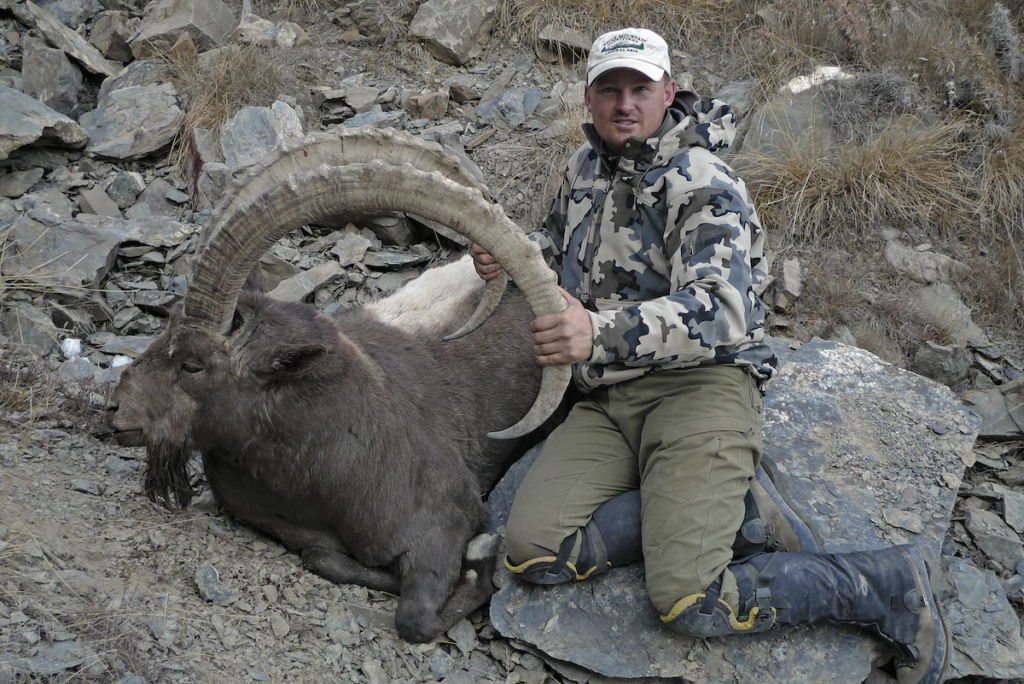 The author with a giant 54” mid-Asian ibex taken in Kyrgyzstan in 2012.
The author with a giant 54” mid-Asian ibex taken in Kyrgyzstan in 2012.
In general, the various goat or Capra subspecies are more plentiful and less expensive to hunt than sheep (Ovis). For the size of their horns and the cost of the hunt, ibex are probably the best-valued mountain animal, outside of a DIY sheep or goat hunt in North America. I would highly recommend any adventure-minded hunter add ibex to his or her bucket list.
I often hear ibex referred to as a “poor man’s sheep”, but in many ways, Capra species are more challenging to hunt than sheep, because they live in rougher terrain and are more elusive and smarter than most wild sheep.
Generally, ibex also live longer than sheep and will keep growing their horns significantly, even after 10 or 12 years of age, whereas sheep basically stop around age 10. To take a big ibex, hunters should look for one at least 8 years old and preferably 10-plus. The oldest I’ve taken was 13, but in some places, especially in Spain, they can reach 14-17 years of age.
I’ve been guiding or hunting sheep and goats for over 20 years. It’s easily the most rewarding and exhilarating hunting I’ve ever done. Mountain hunting challenges most of our senses and tests our skills needed to become a successful hunter: physical, mental, navigation, patience, shooting, spotting, stalking, trophy judging, and survival.
Whether hunting myself or guiding a client, there is rarely a dull moment. My first trip to central Asia (the countries located between China and Russia and often referred to as the “Stans”) was in 2002. I’ve been growing my business (Asian Mountain Outfitters) there ever since. Asia has its pros and cons, but in general, the hunting is a bit better, as there are fewer trees, drier weather, more plentiful game, and very few resident hunters to compete with.
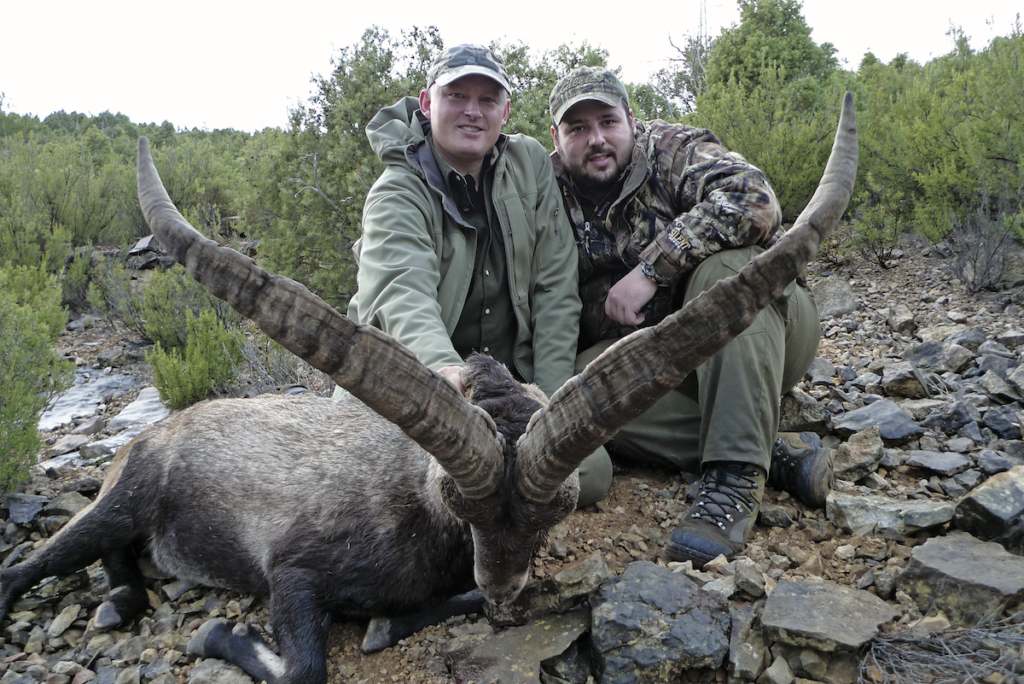
I work in many countries with local partners who organize guides, horses, vehicles, permits, etc. Compared to my operation in Canada (Canadian Mountain Outfitters), which I ran for many years, it’s nice because I don’t need to own 25 horses, 15 tents, 10 boats/motors, etc. And unlike Canada and the USA, all license fees are included in the hunt price. Also, there are no additional air charter fees or taxes that hunters need to pay on Asian hunts. But on some of the hunts we’ll mention, such as the Spanish ibex and Turkey’s Bezoar ibex, the license/permit fees are very high.
The following is a table I’ve created, giving some information on ibex species and locations. This table lists most of the ibex of the world and approximate sizes, locations, and costs of each hunt. The costs vary a lot as some countries, such as Spain and Turkey, charge more money for larger animals or special/easy areas.
Countries like Tajikistan, Mongolia, and Kyrgyzstan don’t have trophy fees for shooting big animals. Pricing in these areas depends more on the area and if a hunter books directly with a local company or goes through an agency in the USA or Canada, such as the one I run. Our company can organize hunts for all of these animals in their native habitats. The last two animals on the list are typically not hunted in the wild, but I know they’re hunted on certain game farms in Texas.
| Species | Countries Found | Size Ranges | Typical Trophy | Cost Ranges
US Dollars |
| Bezoar | Turkey | 35-57” | 42-46” | 15,000-35,000 |
| Mid-Asian | Kyrgyzstan, Tajikistan, Kazakhstan | 35-60” | 42-46” | 5,500-12,000 |
| Himalayan | Pakistan | 35-52” | 40-45” | 10,000-12,000 |
| Sindh Ibex | Pakistan | 35-52” | 40-44” | 18,000-22,000 |
| Altai | Mongolia & Russia | 35-52” | 40-44” | 11,000-14,000 |
| Gobi | Mongolia | 34-47” | 37-43” | 11,000-14,000 |
| Alpine | Switzerland, Slovenia | 25-40” | 32-36” | 15,000-30,000 |
| Persian | Iran and New Mexico | 35-51” | 38-46” | DIY in NM ($3,000) |
| Beceite | Spain | 24-39” | 29-35” | 6,000-20,000 |
| Gredos | Spain | 26-39” | 29-35” | 8,000-25,000 |
| Southeastern | Spain | 24-37” | 27-33” | 6,000-20,000 |
| Ronda | Spain | 20-34” | 22-29” | 6,000-20,000 |
| Kri-Kri | Greek Islands | Hunted in TX | ||
| Nubian | Sudan, Egypt, Jordan, Syria, Israel | Hunted in TX |
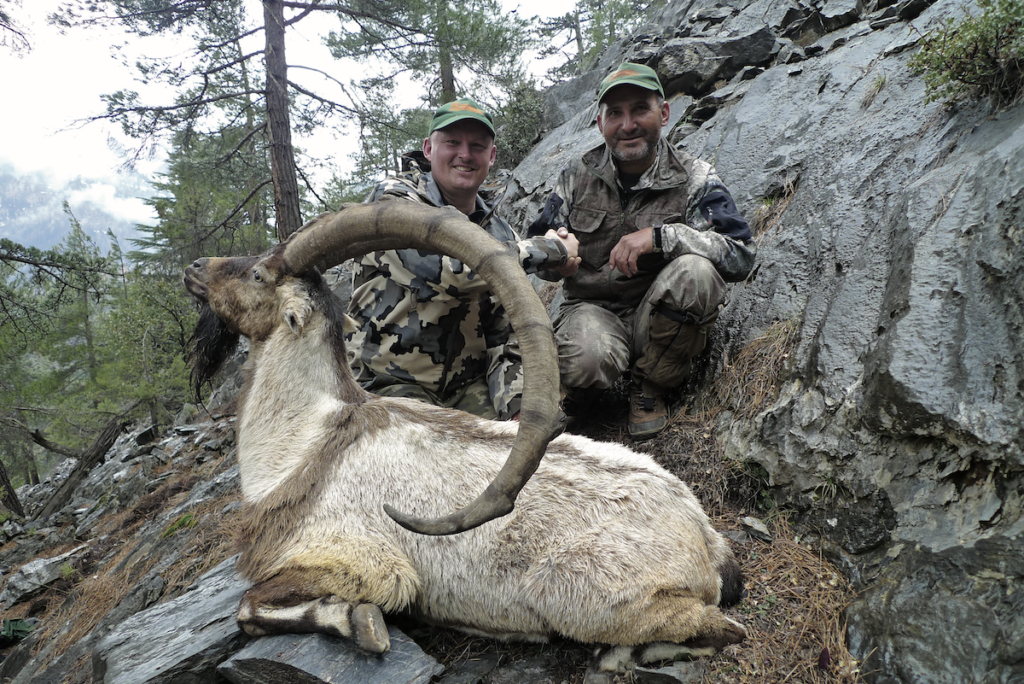
Mid-Asian Ibex (the Stans)
This is the species with which I have the most experience. Hunts start August 15th in Kyrgyzstan and September 1st in Tajikistan, and continue through late February in both countries. The Mid-Asian ibex is the biggest species and also the least expensive to hunt. They are also generally the most difficult, due to the higher altitudes, cold weather, and steep terrain. I still feel this is the best mountain hunt going.
Hunters can take two ibex or combine an ibex with a Marco Polo sheep hunt. On some of the Tajikistan Ibex hunts, hunters can add wild boar or chukar (they are native to this part of the world).
Most hunting is done via horseback with long day hikes and spiking out in the mountains using Hilleberg type backpack tents. Riding back and forth between hunting areas and base camp wastes too much time and tires the horses and guides. Usually the big ibex don’t live near base camps or nomad huts, because locals like to eat ibex and mature animals are elusive.
Riding and hunting with horses in Kyrgyzstan is an amazing experience. These animals are very sure footed and tough. In general, hunters prefer to ride these animals to the ones from North America.
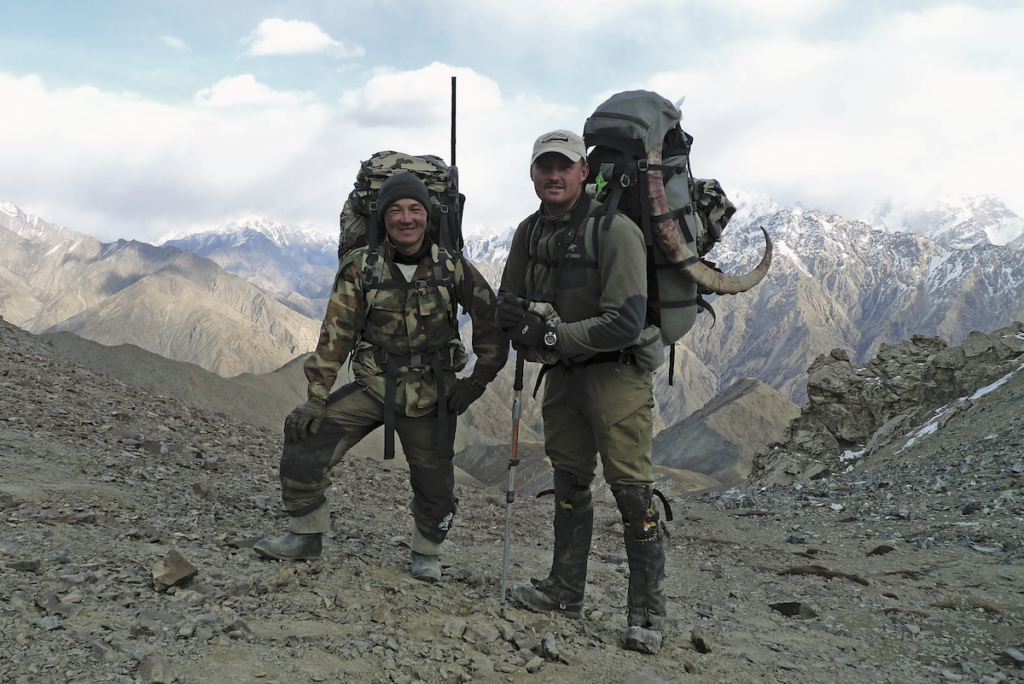
I’ve said it many times, but Mid-Asian ibex is one of the best hunting values in the world and one of my favorite animals to hunt or guide. When looking online, you can find prices advertised, from local operators to the biggest international agencies, ranging from $5,500 to over $12,000, depending on services offered, sizes, camps, etc. We charge $7,500 to $9,000 US dollars, a fair price while providing accurate information, quality animals, and professional experiences for our clients.
There are probably 30-40 local companies in Kyrgyzstan that offer ibex hunts, but many of them don’t speak English and have difficulty communicating with international hunters, so most companies will partner up with a company like ours to market and represent them abroad.
Because our partners have a greater supply of ibex licenses then there is demand, hunters can always go ibex hunting, even on short notice. Organizing a rifle permit is very easy and fast and Kyrgyzstan doesn’t even require a visa now.
In Tajikistan, hunters need a visa, but it can be done at the airport upon arrival. I’ve personally been to many camps in these countries where we send clients; we are always looking at new areas to increase trophy quality and to provide more options. In Kyrgyzstan we hunt over five hunting areas/locations and are still expanding. Most of these areas are an 8 to 14-hour drive from the Capital city of Bishkek.
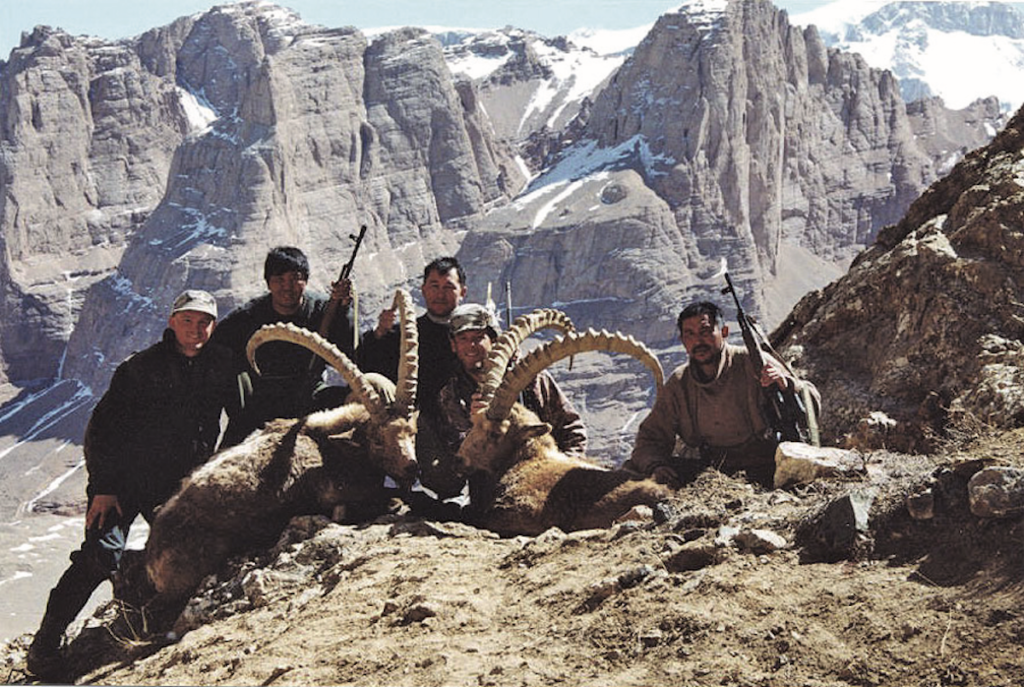
In Tajikistan, we can send ibex hunters to an ibex-only area near Dushanbe for hunters looking at shorter hunts and less travel time or to our Marco Polo area in the southern part of Tajikistan, which requires a lot of travel time.
Ibex can also be found in Kazakhstan and a hunt there can be combined with big Maral stag (basically an elk), but these companies often charge an increased trophy fee as the size of the animal increases. Many Western hunters don’t like this, but this country has some big ibex. All three of these countries have more ibex killed by wolves or harsh winters than are shot by hunters.
Mongolia
Currently, only the Altai ibex can be hunted, but we expect Gobi ibex to be open again soon. Mongolia is considered to be the safest country to hunt ibex and Western hunters have been coming here longer than the other countries. Mongolia is also famous for the High Altai Argali sheep, the largest sheep in the world.
Jeep hunting is more common here than the horseback style of hunting more common in Kyrgyzstan. I would recommend Mongolia as a great destination. Gazelle and stag can also be hunted here.
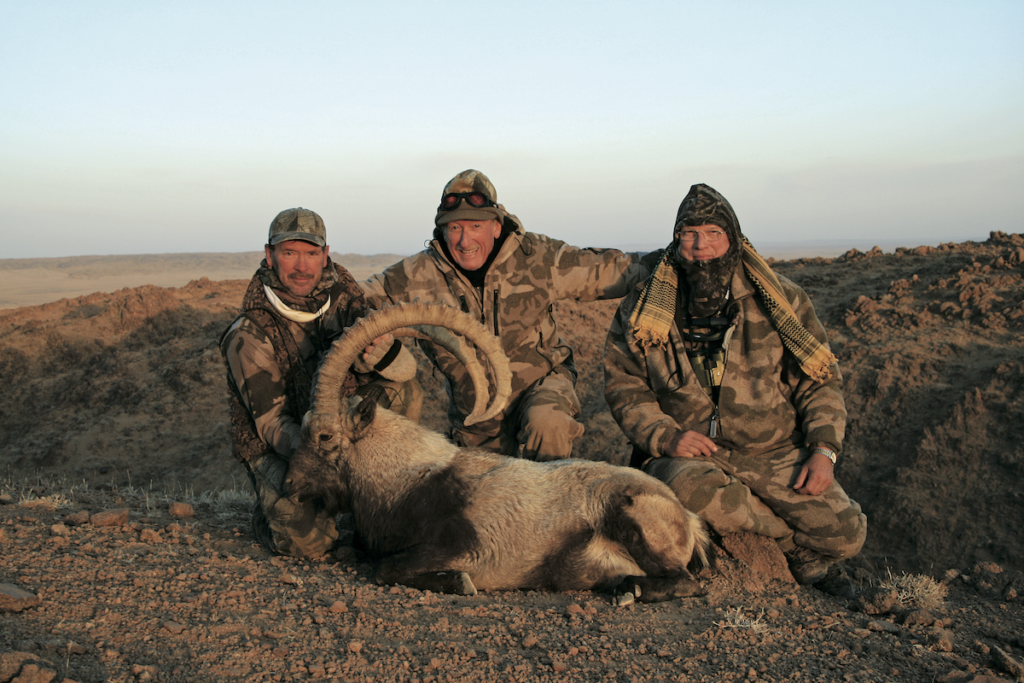
Turkey
The Bezoar ibex of Turkey are probably the most handsome but are also the most expensive of the ibex species. Prices depend on the area and the size of the animal.
There are about four main outfitting companies in Turkey that are issued between 100 and 150 permits per year. Our partners in Turkey take 30-40 ibex per year and a few of them broke 50” in 2014.
I’ve only hunted this country one time, but will be sending more clients there in the future. Some hunts are easy and some are extremely difficult. The company we work with is very professional and organized; the owners participate in most of the hunts personally in addition to having excellent vehicles, experienced guides, pre-season and post-season scouting and great accommodations. Also, many hunters add wild boar, chamois, and gazelle to their hunt.
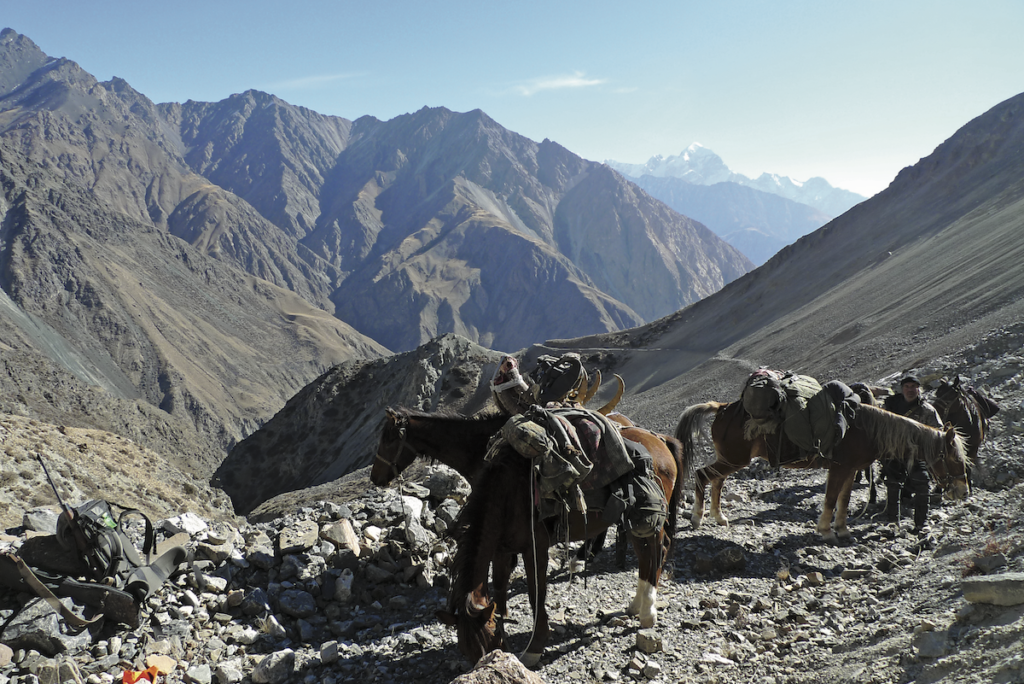
Spain
In general, hunting in Spain is an excellent and less difficult hunt. Until I hunted here in January 2014 for Beceite ibex, I often thought Spain would be too easy and wasn’t “real” hunting, but some of the Spanish hunts can be a serious challenge. Unlike a mid-Asian ibex hunt, there is no chance for frostbite or high altitude sickness.
For hunters worried about safety and hunting in foreign countries, it doesn’t get much safer and more hospitable than Spain. I highly recommend it, especially for people who want a true “vacation” and enjoyable experience, possibly even with family and friends. If you’re married to or dating someone new to hunting, this is a good country to take a new hunter. Here, hunters can do a fast trip (2-3 hunting days), ideal for people on a limited time schedule.
There are also adventurous hunts, especially for the southeastern ibex. In April, I hunted in southern Spain for this variety and had a real challenging hunt. I was on the mountain for more than 15 hours the day I shot a ten-year-old animal.
Hunt prices depend on the animal’s size, the area (private or public land), and the type of service the outfitter provides. My recommendation is to hunt the Beceite first if you only want one species. They’re plentiful and affordable and are found in the mountains between Barcelona and Madrid.
The Gredos might be the most attractive, but they are the most expensive in general and most of the big ones are on private reserves. These are found mostly in central Spain. The southeastern variety lives in the mountains near the southeastern coast and sizes vary greatly depending on hunting pressure, private/public ground, etc.
The Ronda is the smallest species of ibex, but is a handsome animal. They’re found in the south-central part of Spain.
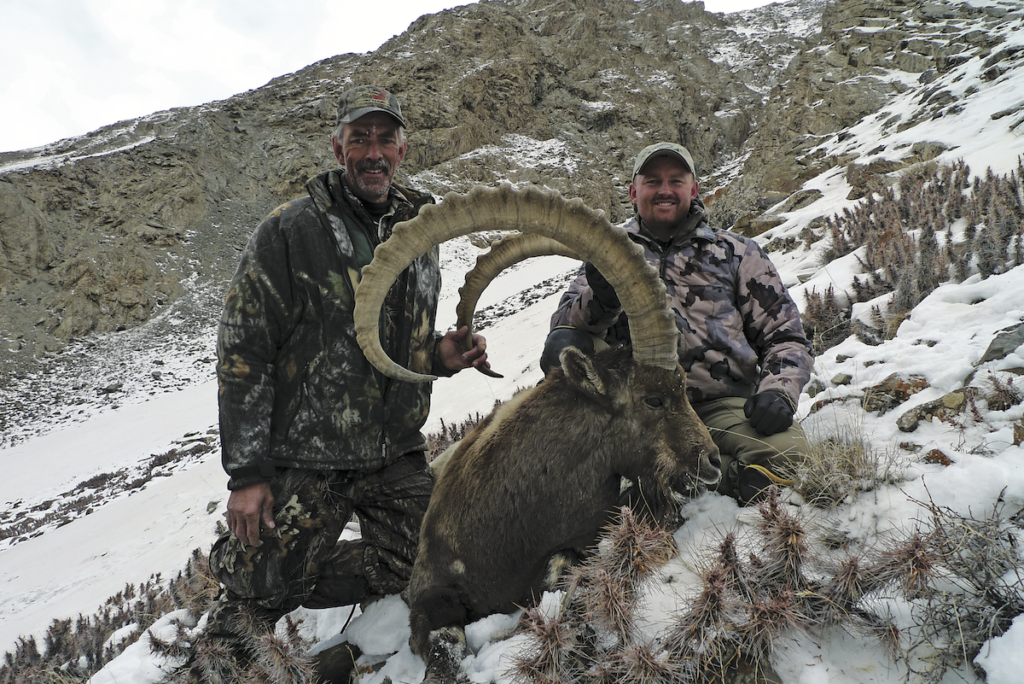
Pakistan
There are two species of ibex in Pakistan – the Sindh and the Himalayan. The Sindh lives in a desert Environment and is small in body size, like the Persian ibex of Iran.
The Himalayan ibex is similar in size to the Mid-Asian ibex and lives at high altitudes. It can be a very challenging hunt, and sometimes these animals can be found near villages.
The Sindh Ibex is quite expensive, but the Himalayan Ibex is priced between the Altai and Mid-Asian varieties.
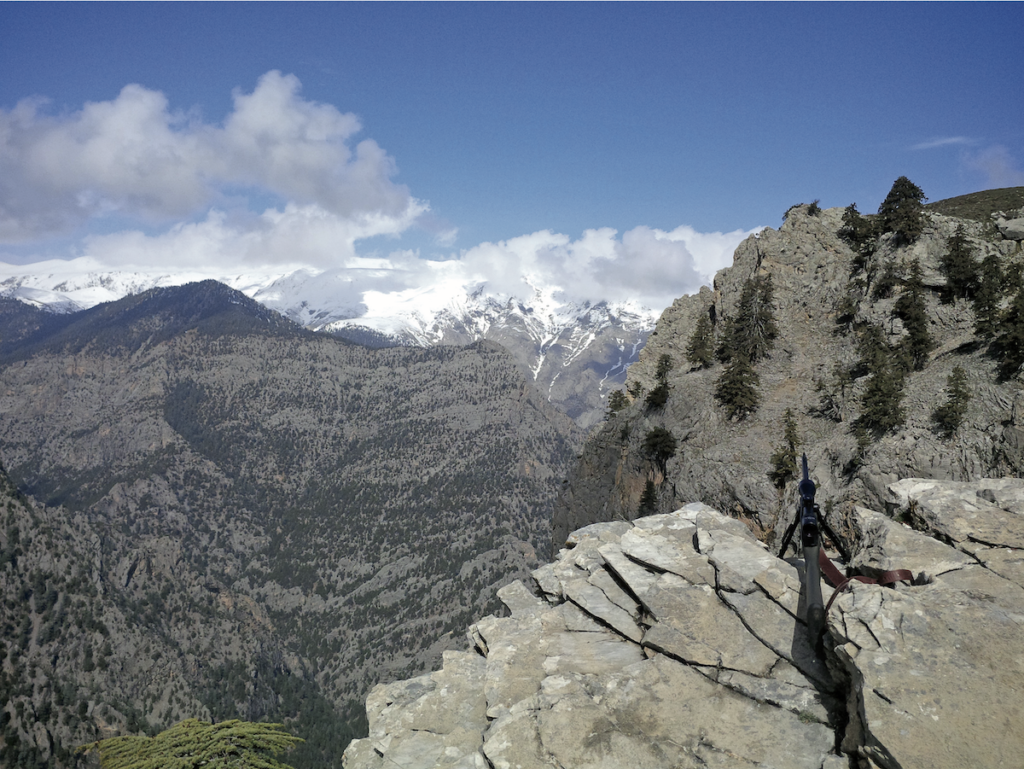
Safety
One of the concerns I keep hearing from many hunters and potential clients are concerns for their safety while traveling to foreign countries, including Turkey, Russia and/or one of the “Stans”. I think that CNN, Fox News and MSNBC can be partially blamed for a person’s excess worry about safety and international travel, especially people from the USA.
I’ve traveled on average, 1.5 to 2.5 months each year in foreign countries since 2002 and I’ve yet to experience what I’d consider a serious threat to my safety, not to mention I’ve had zero terrorist-type incidences.
I’m not saying it can’t or won’t happen, but in general, it’s very unlikely. Hunters provide a lot of economic assistance to these countries and locals don’t want to cause problems for them. The most dangerous part of an Asian hunt is the rough roads, high altitudes, and winter conditions.
A Pakistan outfitter I know is always having to answer questions about safety in his country, and I know many of you won’t travel to this country, period. Still, every hunter I know who has hunted there in recent times loved it.
This outfitter said that hunters have been going to Pakistan for over 65 years with zero terror or hostage incidences. Also, if you look at Turkey, it is hugely reliant on tourism. Having a Western hunter roughed up or injured and making national news would kill the tourism business in such countries.
In my opinion, the biggest danger with international travel is winter conditions on remote, rough, steep mountain roads. The second-most dangerous is the high altitude and exposure of body parts to cold weather/winter conditions. This is why I feel that having proper equipment/clothing, including satellite phones, is critical for health and safety.
Terrorism is the least of my concerns when traveling overseas. If people use good common sense, I feel that hunting in central Asia is a true adventure and quite safe. I don’t believe that hunters should postpone hunts due to news and potential threats.
In general, our central Asian partners have good reputations and are well connected with local villages and government officials. It’s in their best interest to ensure that international hunters don’t have security threats. Turn off the TV, put away the newspapers, unsubscribe from Twitter, and go to the gym, the rifle range, and get in ibex shape!
In my opinion, every mountain hunter should chase ibex at some point in their hunting career. Unfortunately, for the DIY hunter, there aren’t “self-guided” hunts available (other than New Mexico), but competent and good hunters will enjoy hunting these animals and your experience will be very helpful, especially on the cold winter hunts.
Most of these areas have climates akin to southern Colorado, Utah, and Nevada, but with higher elevations. These are real hunts for real hunters.
If you aren’t so adventuresome, try an ibex hunt in Spain. For additional information on hunting here, visit our website, www.asianmountainoutfitters.com, or call us.
Also, attend one of the hunting conventions from the following list and meet local outfitters and well-known booking agencies. The options are endless.
- Wild Sheep Foundation (FNAWS): www.wildsheepfoundation.org
- Safari Club International: www.safariclub.org
- Grand Slam/Ovis: www.wildsheep.org
- Dallas Safari Club: www.biggame.org
Bryan Martin is a seasoned worldwide hunter/outfitter who specializes in international hunts. He can be reached at www.Asianmountainoutfitters.com or (250) 317-5525.


